It is easy to feel totally overwhelmed when you first start to dig into the subject of emergency preparedness. Some events aren’t too bad, and maybe you can expect help to arrive in hours or days. Other events are genuine apocalypses, and promise to plunge entire countries into bedlam.
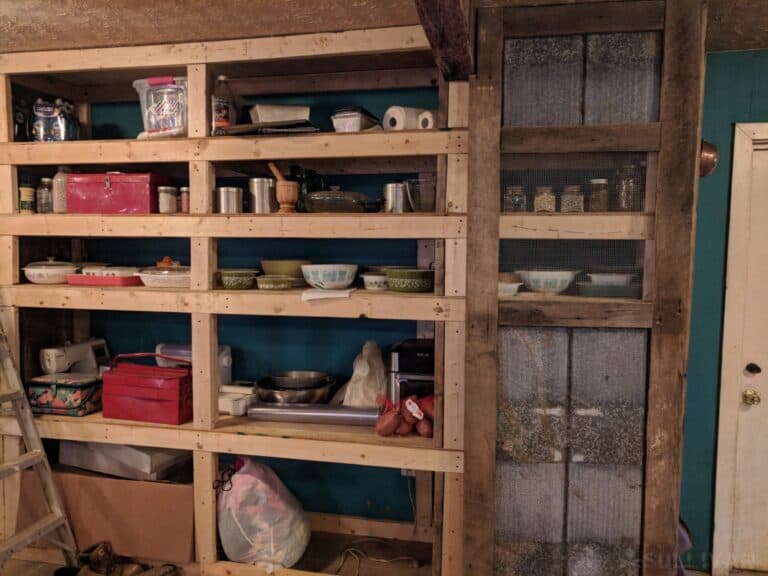
Where are you supposed to start?! The more you become aware of just how much can go wrong, of everything bad that can happen, it is understandable that many will want to just forget about it and pray that nothing like that ever happens to them while they are alive.
I’m here to tell you that you shouldn’t give into that feeling. Like every journey, even the longest and most intricate still starts at the beginning with just a few steps.
You can say the same thing about prepping. Beginners might feel intimidated by seeing how much veteran preppers have done and stockpiled, and feel you’ll never measure up or never be truly ready, but that isn’t true.
In fact, a basic core of personal readiness and self-sufficiency is usually more than enough to weather any storm.
If you’ve always wanted to get ready, but never knew where to begin, you’ve come to the right place. This article is going to familiarize you with 12 important concepts that will help guide your initial foray into the prepping world.
With a little more than a few hours this weekend, you can be far more prepared than you were and well on your way to living a lifestyle of readiness that is easy to maintain. Keep reading and we will tell you everything you need to know.
#0. Perform a Personal Assessment
Step zero, before you do anything, is to figure out your unique situation and plan accordingly. Before you do anything else, you must assess.
How can you begin to formulate a solution for a problem if you cannot even define what the problem is and what is at stake?
Now, it’s easy to run away with wild thoughts and ever increasing possibilities, each with a hundred different bad outcomes in this step, but let’s not do that.
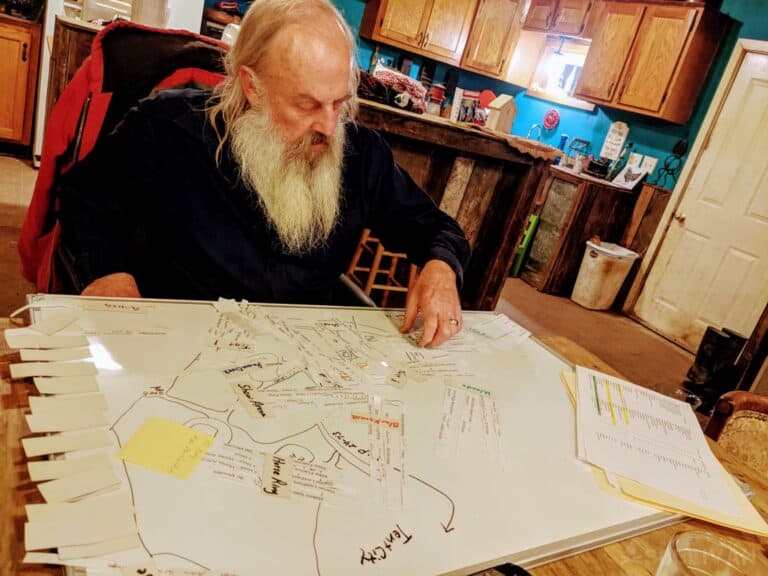
Start with the fundamentals:
- Who are you preparing for? Is it just you? You and a partner?
- Do you have a family, either children or perhaps elderly parents that you care for?
- Do you have a pet?
- Do you have farm animals?
All of this will influence your decisions at every step of the process…
For instance, if you are taking care of elderly parents that frankly cannot travel well at all, you might decide that staying put or bugging in is a better response compared to evacuating if you have any choice.
A larger family or more people that you care for means you’ll need significantly more supplies in the form of food, water and medicine then you would for you alone or just your partner.
Some of the things you may want to write down:
- the number of people to include in your plan
- the gender, age and medical conditions of each
- pets and farmyard animals
- your location and climate
- your bug out location (you’re gonna have to split your stockpile between your home and your secondary location)
- the type of natural disaster you’re prepping for (for example, if you’re worried Yellowstone might erupt, when it does you might have to spend months on end inside your home so make sure you stock up on plenty of respirators)
Then there’s the matter of what it is you’re actually preparing for, what kind of event or disaster that is most likely to imperil your safety. If you live in cold northern regions, a cold climate itself is a danger as is the risk of blizzards and potentially avalanches.
People who live in hot climates must ever be worried about running out of water and a simple exposure. If you live in a city rioting is never out of the question, and crime rates in general are much higher. And so on and so forth.
Of course, not all disasters have long-term effects. Tsunamis, floods, tornadoes, wilfires, earthquakes and hurricanes are just a few examples of chaotic events that, although they can produce significant damage and even get the authorities to declare a state of emergency, they don’t have long-term effects.
But the really bad ones, the worst-case scenarios that can forever change how our society functions and throw us into darkness or even as far back as the middle ages are:
- EMP bombs
- war
- pandemics
- an economic collapse
- famine
- a mega-drought
If such an end of the world disaster were to affect America (or even the entire globe), it’s safe to assume things will not get back to normal anytime soon.
You need a long-term survival plan for you and your family that will keep you safe and well fed for years to come.
Keeping in mind that I’m not talking about what to do when the actual disaster strikes, this has been covered in depth here. Let’s do this!
As you will soon learn, basic preparation covers many bases for all kinds of events and potential emergencies, and that’s why the basics are so important! However, certain disasters and other events might dictate more specialized responses or preparation to specific threats.
Depending on who you are and where you live, you might not even need to worry about it. But this just illustrates why it is so important to drill down and be specific about the things that are most likely to actually happen in your area.
Once you know who you are preparing for and what you are preparing against, you can move on to the next step.
#1: Take Care of Basic Needs
Anytime you are reading or otherwise learning about survival or prepping in general, it never fails that you’ll hear people talk about the survival necessities. What are the survival necessities?
Depending on who you ask, there are three, four, 10 or even more survival necessities, or sometimes they are arranged in a descending order of importance sort of like pyramid. once again, this can make it hard to zero in on what really matters the most. Time to cut through the static!
For our purposes, there are five survival necessities that matter the most in the short term. Lacking any one of these can kill you, sooner or later: The five survival necessities are air, shelter, water, food and security, generally in that order of importance.
Ensuring that you can provide and keep these five necessities when disaster strikes is the entire reason you are prepping in the first place! Doing so will require a combination of material or resource gathering and storage along with having the right skills to take care of problems.
No matter what situation you are facing, no matter what’s going on, no matter who you’re with, no matter the environment, no matter any of the other variables: if you can provide and sustain these five things you can survive, or at least survive for quite a long time!
You can only live for a few minutes without air, only a couple of hours without shelter if conditions are really bad, a couple of days with no water, a couple of weeks without food and who knows how long if you don’t have any security from external threats.
The trick is to learn how to do so for each of them, and that is where things can get really, really intricate. Don’t worry about most right now, we have tons of material for you on this very website on every conceivable subject that will guide you step by step.
But we will be focusing on how to establish one of the most critical fundamental preps, which is your personal food and water supply. We will cover that in detail in the very next section.
#2. Create a 3-Day Food Supply
How much emergency food do you need for long-term survival? Many prepping experts say one year but, in reality, you will be prepared for almost any contingency with a basic three day food supply.
You can, and should, stockpile more and more over time so you can be ready for longer-duration events, but for now let’s just focus on enough food storage for 3 days.
Next, it’s time to do the math. Let’s start with water. 1 gallon a day per person is the minimum you should have so let’s say 1.5 just to be safe.
For a 3-day supply for you, your spouse and a kid, you would need 4.5 * 3 days that’s almost 13.5 gallons of water. Bottled water or big jugs of water work fine and are affordable for the purpose.
For food let’s start from 2,000 calories per person per day. 2,000 calories per person per day is the standard, but since you may be working hard in the aftermath of a disaster, I would say one would need at least 2,500 calories. For a family of three, that’s 7,500 X 3 days = 22,500 calories for a three day stockpile.
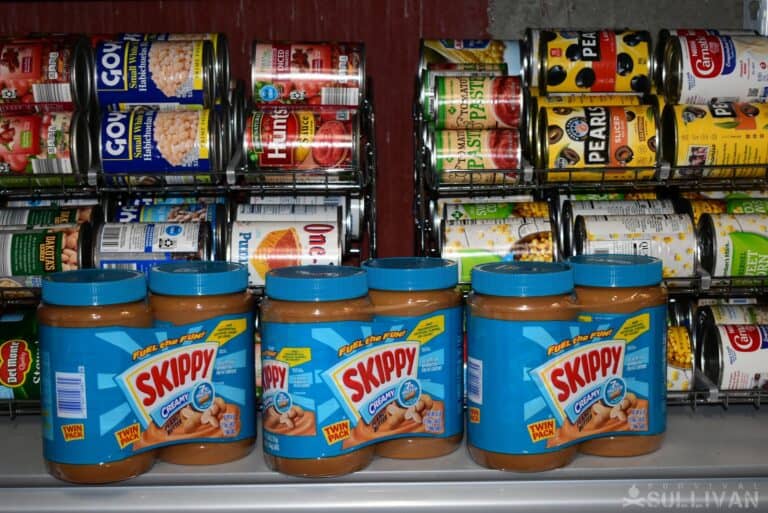
You can either start from there and count the calories so you always know how your food will last you or calculate how many meals or servings that makes per person, per day, and not worry about the math. Up to you, but make sure you have enough!.
A few essential tips for a long-term food supply:
- Rotate your stockpile twice a year to get used to the taste and make sure it doesn’t spoil.
- Know who you’re stockpiling for: your household members, your pets, your farm animals.
- You definitely don’t want to stock up for non-preppers who don’t live under the same roof as you. They need to build their own supply.
- Do label your containers with the expiration date so you always consume before.
- Don’t forget to pad your pantry with cooking utensils, can openers, wheat grinders, and anything else you may need to cook and consume your food.
If you haven’t read my article on the best 37 foods to hoard for long-term storage, I highly encourage you to do so right now.
Spoiler alert: wheat berries, spam, and pink salmon are just a few of the foods that will last decades if properly stored in a cool, dry, dark place.
#3. Cultivate Self-Reliance
Disclosure: This post has links to 3rd party websites, so I may get a commission if you buy through those links. Survival Sullivan is a participant in the Amazon Services LLC Associates Program. As an Amazon Associate, I earn from qualifying purchases. See my full disclosure for more.
Being able to provide everything your family needs without outside help is a lost art that may very well become a necessary skill after the collapse.
But self-reliance is another one of those nebulous terms that seem so simple, but when you start to really think about it it can encompass almost anything.
Once again, that makes it intimidating. But, by scaling down and zeroing in our efforts we can make the concept a lot more manageable. That’s a good thing, because self-sufficiency goes hand in hand with prepping.
Being self-sufficient, self-reliant or personally ready, whatever you want to call it, just means that you can rely on yourself to solve problems. That’s it. Again, deceptively simple.
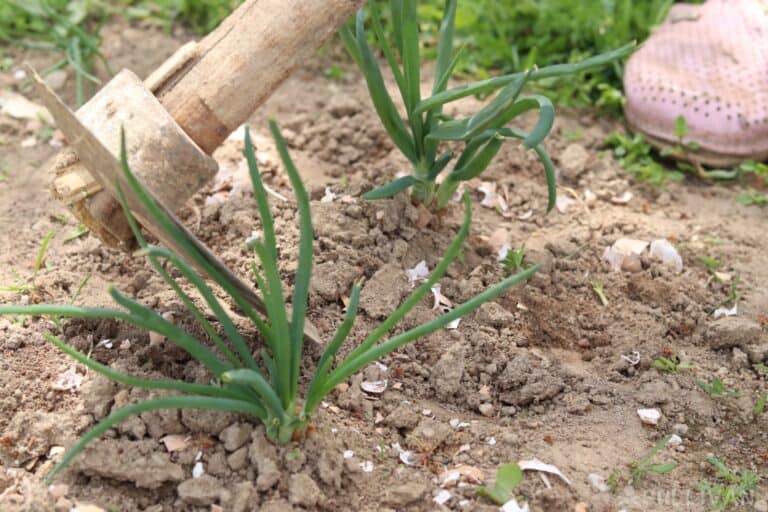
The trick is cultivating this in your everyday life so that you know you can depend on yourself when the chips are really down. This requires a combination of discipline, a willingness to make mistakes, a willingness to learn and a strong spirit of perseverance.
Part of cultivating your self-sufficiency is taking care of problems you would normally outsource. Do you rely on AAA to take care of roadside breakdowns?
You need to learn how to change a tire and take care of other typical problems. Do you know how to cook or do you live on takeout and pre-made meals? That’s right, time to get busy in the kitchen and then learn how to prepare meals in an austere environment.
It might sound a little silly, but it really isn’t. Self-sufficiency means knowing how to take care of problems that do occur, and if you don’t know how, learning how to take care of it on the fly, how to circumvent the problem or how to just go around the problem when the chips are down.
Again, this is something you can spend your whole life cultivating and mastering, but for now it just means telling yourself “I’ll figure it out” or “I’ll do it” whenever a problem pops up or whatever there’s something that needs doing. That’s it.
Also consider the following real world situations that might pop up in any number of disasters that might require you to be self-sufficient in order to obtain a good outcome. Read over these and ponder what you would do and how you would do it:
- How will you take care of farm animals such as chickens, rabbits, ducks, or goats during a crisis?. Larger ones like cows and pigs require even more care and food. Will you try to help them, or focus only on your human family member?
- Do you know how to gather and store water or food to keep in from spoiling when the power is out? Will you try to preserve fresh foods or cut your losses and focus only on preserved stuff?
- If there is a call to evacuate from an area but you feel safe and secure in your home will you stay or go? What if evacuating seems to be more dangerous?
- If you or your family is hurt and help isn’t coming, do you try to move them to help or find help and bring help to them?
So, what do you think? If any of these scenarios has you sweating with anxiety just sitting there in your chair or lying in your bed, let that be a reminder it’s time to start working on yourself sufficiency now, not when the pressure is really on! Don’t worry about it, you’ll get there. Let’s move on.
#4. Master Basic Survival Skills
Basic survival skills are just that, basic skills that will help you survive. Let’s circle back to those survival necessities I talked about above.
If each of those necessities represents a potential problem if you can’t get them, and self-sufficiency means solving that problem yourself, then survival skills are just the tactic or technique by which you will solve the problem. Think of it as the correct answer or code to help deal with the issue at hand.
If you are in need of shelter, knowing how to construct a shelter from natural materials or salvage supplies can keep you alive no matter the environment. This might be a shady dugout and a hot environment. It could be a warm and insulated lean-to made from a space blanket and pine boughs in a cold environment.
If you need water, learning how to make both natural and man-made sources of found water safer to drink could save your life. Knowing how to find edible plants and animals, or where to scavenge for food when you are very hungry could make all the difference. You see where this is going.
The neat thing about survival skills is that there’s always more than one way to skin a cat. Some skills are applicable in certain environments or certain situations but not others. Some are generalized while others are highly specific. Again, this is a great opportunity to get derailed by details, but you don’t have to.
Think of each one as a tool in your toolbox. Some are good at just one thing, while others are good at multiple things. What’s important is having a full toolbox when you need it!
The following is just a sampling of some worthy survival skills that you might learn:
- Hunting
- fishing
- Growing a garden
- Home repair
- Defensive driving
- Land navigation
- Water purification
#5. Medical Care
Needless to say, you’re gonna need medical supplies and knowledge to take care of yourself and your family. A comprehensive first aid kit is a must, as is learning CPR and basic wound care.
Working in the field all day and even around the house is hard and accidents will happen. In addition to storing lots and lots of band-aids, you’ll have to improvise (from duct tape and cotton balls, for example).
#6. Hygiene
This is one of the most chronically overlooked, and still most important, components of any survival plan.
Keeping it clean might be the last thing on your mind when you’re dealing with the aftermath of a major crisis, but especially for long-term survival scenarios it is imperative if you want to stay healthy, much less stay alive.
The bottom line is that unwashed bodies, unclean conditions and a lack of waste management will unleash pestilence that can wipe out groups of people living in close proximity and then turn into a full-blown epidemic.
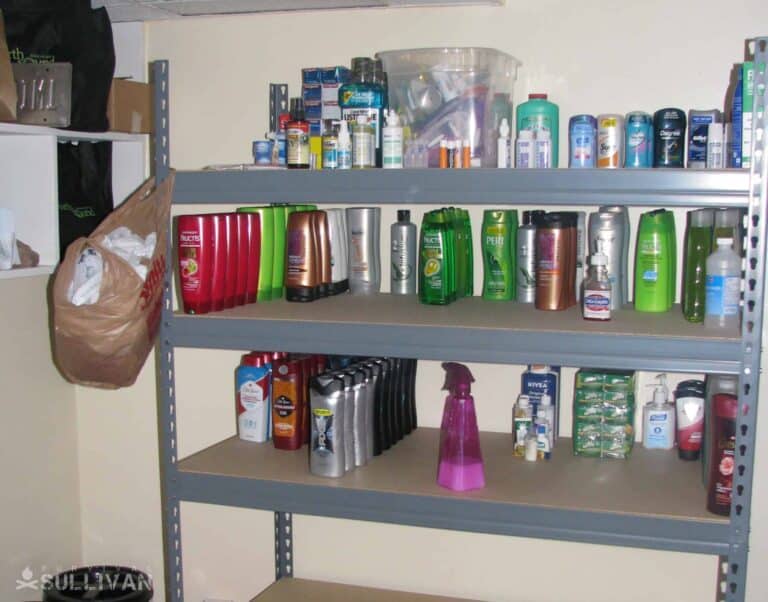
Once the dust settles, there’s going to be a BIG hygiene problem. Big cities will be the ones most affected because of all the garbage that will accumulate but don’t think you’re safe just because you’re in a rural area. Burning your garbage can attract nosy neighbors so it’s probably best to bury it.
Don’t forget that garbage attracts a lot of rats and other critters. If you want to get rid of rats, make sure they don’t have food, water, and shelter.
Speaking of hygiene, don’t forget your teeth. Even the best dentist in the world can’t operate without modern equipment unless you’re willing to take a reasonable amount of pain (I can still remember this one tooth my dentist pulled out without anesthesia when I was a kid – ouch!).
The solution? Stock up on trash bags, soap, baby wipes, toothbrushes, toothpaste, floss and mouthwash. Mouthwash can last for at least 2-3 years because bacteria cannot grow inside. You’ll thank yourself for doing this, trust me.
#7. Self-Defense is Paramount
For many beginning preppers, especially people who don’t come from a background where martial arts and guns were much of a factor or from a career track where combat was very much part of the job, this can be the most harrowing part of all.
Sadly, during any major disaster, be it one that is comparatively short-term or long-term, you will probably have cause to protect yourself from other human beings at some point. History gives us way too many examples of this for us to discount it, and sometimes you can’t just avoid trouble.
It makes sense, then, that we take it upon ourselves to be self-sufficient when it comes to our own protection. The vast majority of people today even outsource this to police and security forces that generally suppress criminality and will, hopefully, be there in the nick of time when we were ourselves targeted.
Sadly, all of these uniformed emergency services personnel will have a whole lot more on their plate the same as you do in the aftermath of a disaster.
You don’t need to panic, you just need to figure it out, remember? Luckily, you can train and prepare for this just like any other survival skill.
Getting ready to protect yourself involves physical preparation, being fit, mental preparation, clarity of purpose, and also tactical preparation in the form of hand to hand skills and skills with weapons, be they firearms or knives.
Many preppers make going armed a part of everyday life, incorporating defensive weapons into their everyday carry, or EDC.
This, as you might expect, is an extremely intricate and sensitive topic. If you have done nothing else coming in to prepping but are already fluent with the concepts and skills needed for self-defense, good, you’re ahead of the game.
If you’re not, you don’t need to panic, but you do need to get started. Once again, we have a whole lot of articles that can help you find your way.
Stocking up on guns and ammo is a good idea but what if there will be no ammo available? You’re going to need these alternative survival weapons (pepper spray is great) to keep you and your family safe PLUS a solid home invasion and bug out plan.
Yes, you might be forced to bug out weeks or even months after a disaster since things can take a turn for the worst just when you thought they’re getting better.
#8. Stock Up On Tools, Gear etc.
When it comes to prepping, there is something of a stereotype that persists about preppers but one that is frankly pretty justified: Preppers love to buy stuff. There’s always a better tool, another gadget, more gear that will help someone be even more ready for a problem that pops up.
This mindset is often disdained by old school survivalists who focused on skill set above all else, and where having the right tools was just a bonus if you were fortunate or diligent. On the other hand, the best tool in the world is no good if you don’t know what you are doing!
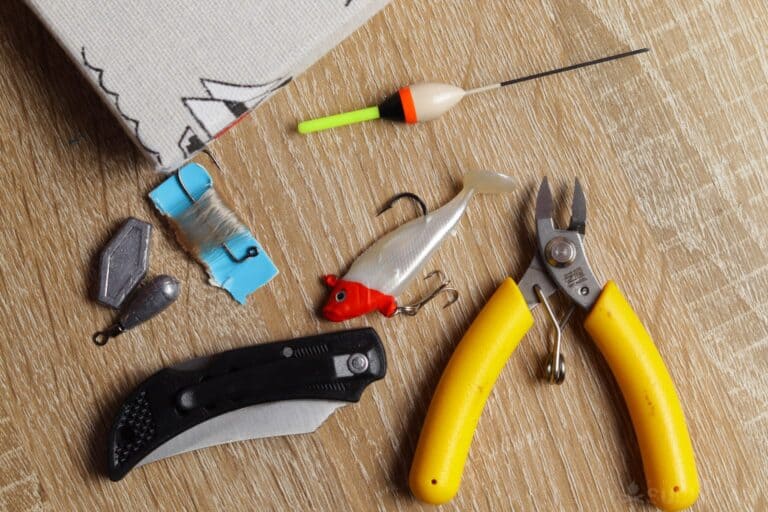
But, like most things, the best answer lies somewhere in the middle. Having well developed skills is indeed more important than just about anything, but having the right tools can allow a skilled person to be even more efficient and have a greater chance of success.
Accordingly, you’ll want to have the right resources to support your mission of preparation. If you plan to evacuate, assembling a bug-out bag is a good idea. For sheltering in place on a mostly permanent basis, other options are better.
Once again, many of these items are highly generalized and applicable to nearly any survival scenario. Others are extremely specialized, and would only be useful in the most specific circumstances.
It’s up to you to determine which ones you need, but I can tell you right now that you should have once again focus on the basics.
Consider the following list items that are universally useful in almost every survival situation.. I made a list here but, to give you a heads up, think:
- canning lids,
- needles and sewing kits,
- fishing equipment,
- cooking equipment (pans, pots, coffee pots etc.)
- baby diapers and feminine hygiene products,
- wood, alcohol or propane stoves,
- shoes,
- flashlights (particularly the hand crank kind),
- batteries,
- tools (hammers, nails, wrenches, shovels, splitting mauls, a wrench set, pliers, hoes, etc.),
- survival knives (getting a good knife post-collapse is going to be tough),
- chain saws (including one that’s hand crank)
- a manual grain grinder,
- sharpening stone,
- barrels,
- clothes (especially hiking boots),
- matches,
- detailed maps of the area you live in (if you can get them laminated/waterproof, even better),
- and other items such as coffee, alcohol, or tea that will also make excellent bartering items.
#9. Transportation
Transportation is a fundamental element of prepping because when the time comes to evacuate, or bug out, you’ll need a way to get somewhere safe.
Chances are this will take the form of your personally owned daily driver vehicle, only this time it will be equipped with emergency supplies and a repair kit of its own.
In a pinch, you might have to try and get out on foot, but you should also consider other more specialized vehicles like motorcycles, bicycles and even boats depending on where you live and what skills you have.
When the time comes to get out of Dodge before things get too bad, nothing else will do, and this means you’ll need to start taking care of your vehicle, whatever it is, with the same diligence and dedication that you give all of your other survival supplies.
The following action items should be accounted for as part of your plan:
- Always keep your vehicles maintained, inspected and fueled at all times (assuming they rely on fuel)
- Your vehicle should have a dedicated survival and emergency kit as part of its onboard supplies. This should include tools and choice spare parts as well as a smaller version of the survival supplies discussed above.
- Route planning is paramount. You should have multiple routes memorized and mapped going to each of your evacuation or bug out locations. Have a plan for rerouting should they become blocked or clogged during an actual emergency.
- Consider smart upgrades that will give you slightly better durability or off-road capability and a better cargo capacity, but don’t install anything that will hurt the reliability of your vehicle.
Consider the fact that gas might be unavailable long-term. You’re gonna need some means of transportation that doesn’t rely on energy or gasoline, such as a mountain bike, a canoe, or even a small rowboat. You can find a full list here.
#10. Keep Your Mind Right
The business of survival is indeed a serious one, but where I have seen many preppers go wrong, even some really experienced ones, is omitting the emotional and mental maintenance elements.
This is a combination of learning how to manage pressure, knowing how to deal with uncertainty and having on hand some ways to eliminate boredom.
Let’s face it, survival isn’t always a panicked flight down a narrow trail to get off of a flaming mountain or trying to escape a city swarming with zombies! Sometimes you were just sitting around, roughing it, waiting for rescue to arrive or for things to get better.
If you and your family don’t do very well in any of the above circumstances, it won’t be long before you’re at each other’s throats.
Attitudes are contagious, and an attitude of fear, anxiety and playing the “blame game” will quickly turn into a vicious circle that can tear you all apart, even if you do survive.
A much better option is taking the time now to learn how to deal with all of those negative emotions, how to keep a positive mindset and how to deal with the tedium of just waiting around sometimes.
This can be a combination of improving your interpersonal skills, fortifying relationships you have now while the weather is sunny, and having some games and things on hand, or learned, for just such an occasion.
Remember, attitudes are contagious, and an attitude of calm acceptance if not relaxation and a steadfast positivity will help make you the leader that your family or fellows need under the circumstances.
When I would spend my summers in the countryside with my grandparents as a kid on their isolated farm, I didn’t have iPads and games. My favorite ways to spend time were playing with other kids and animals, listening to the radio, reading comic books, and just talking with friends and family.
Knowing a few card games, songs or really, really good stories might be just what the doctor ordered when it’s time to get morale up. But, if this sounds boring to you, I suggest you:
- learn to appreciate the beauty of simple things and bonding with other people
- to stock up on books, board games, and other things to kill time (full list here).
#11. Light and Electricity
Depending on how you live and your personal requirements, losing power can be an inconvenience or a life-threatening problem. Any number of disasters can knock out power in your area, your city or even across the entire region.
A couple of really bad mega-disasters or man-made catastrophes could knock out power to most of the country!
EMP or not, the power grid will most likely fail everyone post-disaster if things are bad enough, and that means you are going to need your own power source If you want to keep making use of electric appliances and gear.
Regardless of the cause, having options for producing your own light and electricity is generally a good idea. Most people that live in and around society have forgotten just how dark it can really be without light pollution in the form of countless street lights and lit homes.
A moonless, overcast night can be as black as a bottle of ink, and that has risks all of its own to say nothing of what you’ll be facing because of the disaster itself.
Far and away the most important and fundamental tools for providing light are simple flashlights, lanterns and headlamps. All of these can provide personal and area lighting that can help you navigate, stay safe and continue to work even in conditions of darkness.
Another important prep, though usually an expensive one, is a generator. Generator use and maintenance is a whole series of articles onto itself, but you should consider gasoline, diesel and solar generators depending on your objectives.
Another great option is a whole house battery bank, something capable of working in tandem with your generator to store electricity or simply serving as a backup power source when electrical service is cut.
Even with a generator or battery bank, make sure you have other means to light your way at night: candles, flashlights, (solar) lamps etc.
#12. Learn How to Barter Your Stockpile and Your Skills
This is usually thought of as a survival tactic only oriented to very long-term survival after a paradigm-shifting societal collapse, but you might be surprised how often it takes place even during short term survival scenarios.
The bottom line is that people will always need things, and chances are your other survivors will not be anywhere nearly as prepared as you are.
ou can trade for goods and services that you do need if you are a sharp negotiator. It will help you get anything you want in a post-collapse world, such as food, water or much-needed medicine.
Plus, you can even barter the aforementioned survival skills. That way you don’t have to give up any of your precious food, tools or gear in order to get what you want.
A few tips for successful negotiations:
- Always open with a “lowball” offer.
- Never show more than you have to.
- Dig up as many benefits as you can. You never know which one will get them to say “yes”.
- Never act needy, desperate, or in a rush.
- When your opponent is thinking, don’t screw everything up by saying something. Stay silent until he agrees to your terms.
Of course, you don’t always have to make a bargain in order to give someone something they need. If you have plenty, and someone is lacking, you could just give it to them out of kindness.
However, you should not discount your own needs under the circumstances no matter how well off you think you are. Check this article out on how to barter.

My dad was military. My grandfather was a cop. They served their country well. But I don’t like taking orders. I’m taking matters into my own hands so I’m not just preparing, I’m going to a friggin’ war to provide you the best of the best survival and preparedness content out there.

Thanks Dan.
Always super good information!
I’ve been prepping for awhile and now more so
as things get crazier in the world around us.
I appreciate what you’ve shared. You help me dig deeper
and close any holes or add things I’ve missed.
I keep a running of list of what to add to my preps
all across the board.
Once items or the goal is reached I can cross them off
or just start a new list to start adding to them when other
items are in place.
Preparing long term really never stops and thankful your articles serve
to keep me on track
Great in formation, thanks.
But who makes this: chain saws (including one that’s hand crank)? I have never heard of a hand cranked chain saw.
Considering I only found one company and they only had spares, it seems a waste as it wouldn’t cut down a Sequoia let alone a small branch. It would be better to invest in a pruning saw and it cuts (when sharp) better then a standard wood used in carpentry.
Crazy to sub for the 41 pdf book on survival. Why because I already get your newsletter and all I can say is “Keep em coming”. A lot of really good info in the newsletters but how much applies to Australia I have no idea. But I am taking it all on board becaause I reckon the SHTF will come here too in some form or another.
Hey Barb,
I’m emailing you the PDF, tx.
Dan